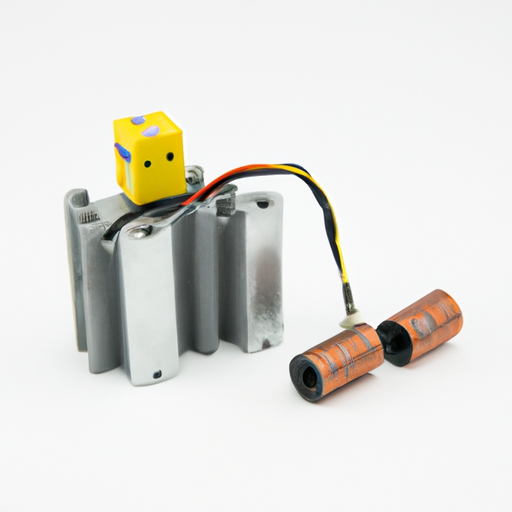What are the Product Standards Recognized by Battery Holders?
I. Introduction
Battery holders are essential components in the world of electronics, providing a secure and reliable means to house batteries for various applications. These holders not only facilitate the easy replacement of batteries but also ensure that the electrical connections are stable and safe. Given the critical role they play, the importance of product standards in battery holder manufacturing cannot be overstated. Standards help ensure safety, reliability, and performance, making them vital for manufacturers, consumers, and regulatory bodies alike. This article will explore the various product standards recognized by battery holders, their significance, and the future trends in this evolving field.
II. Understanding Battery Holders
Battery holders are designed to securely hold batteries in place while providing electrical connections to the device they power. They come in various types, including single-cell holders, multi-cell holders, snap-in holders, and more, each tailored for specific battery sizes and configurations.
A. Description and Function of Battery Holders
The primary function of a battery holder is to maintain a stable connection between the battery and the electronic device. This connection is crucial for the device's operation, as any disruption can lead to performance issues or complete failure. Battery holders also protect batteries from physical damage and environmental factors, ensuring longevity and reliability.
B. Types of Battery Holders
1. **Single-cell Holders**: Designed for one battery, these holders are commonly used in small devices like remote controls and flashlights.
2. **Multi-cell Holders**: These can accommodate multiple batteries, often used in larger devices such as cameras and power tools.
3. **Snap-in Holders**: These holders allow for easy insertion and removal of batteries, making them user-friendly and convenient.
C. Common Applications of Battery Holders
Battery holders are used across various industries, including consumer electronics, automotive, medical devices, and renewable energy systems. Their versatility makes them integral to the functionality of countless devices, from everyday gadgets to specialized equipment.
III. Importance of Product Standards
Product standards play a crucial role in the manufacturing and use of battery holders. They ensure that these components meet specific safety and performance criteria, which benefits manufacturers, consumers, and regulatory bodies.
A. Ensuring Safety and Reliability
Standards help mitigate risks associated with battery use, such as overheating, leakage, or explosion. By adhering to established safety protocols, manufacturers can produce battery holders that minimize these risks, ensuring consumer safety.
B. Promoting Compatibility and Interoperability
With various battery types and sizes available, standards help ensure that battery holders are compatible with different batteries and devices. This interoperability is essential for consumers who may need to replace batteries or use them across multiple devices.
C. Enhancing Performance and Longevity of Battery Holders
Standards often include performance criteria that battery holders must meet, such as electrical conductivity, mechanical strength, and thermal stability. By adhering to these standards, manufacturers can produce holders that enhance the overall performance and lifespan of the batteries they house.
D. Regulatory Compliance and Market Access
Compliance with recognized standards is often a prerequisite for market access. Manufacturers that meet these standards can more easily enter new markets and gain consumer trust, as their products are seen as reliable and safe.
IV. Key Product Standards for Battery Holders
Several organizations develop and maintain standards relevant to battery holders. Here are some of the key standards recognized globally:
A. International Electrotechnical Commission (IEC) Standards
The IEC is a leading organization in the development of international standards for electrical and electronic devices. One relevant standard for battery holders is **IEC 62133**, which specifies safety requirements for portable sealed secondary cells and batteries. This standard ensures that battery holders are designed to prevent hazards associated with battery use.
B. Underwriters Laboratories (UL) Standards
UL is a well-known safety certification organization that tests and certifies products for safety. One of the key standards applicable to battery holders is **UL 2054**, which covers the safety of household and commercial batteries. Compliance with UL standards helps ensure that battery holders are safe for consumer use.
C. American National Standards Institute (ANSI) Standards
ANSI oversees the development of voluntary consensus standards for products, services, and systems in the United States. While there are no specific ANSI standards solely for battery holders, ANSI standards related to electrical safety and performance can apply to the manufacturing of these components.
D. European Committee for Electrotechnical Standardization (CENELEC) Standards
CENELEC develops standards for electrical and electronic products in Europe. Battery holders must comply with relevant CENELEC standards to be marketed in European countries, ensuring they meet safety and performance requirements.
E. Other Relevant Standards
1. **ISO (International Organization for Standardization)**: ISO standards related to quality management and environmental management can also apply to battery holder manufacturing processes.
2. **RoHS (Restriction of Hazardous Substances)**: Compliance with RoHS ensures that battery holders do not contain hazardous materials, promoting environmental safety.
3. **REACH (Registration, Evaluation, Authorisation, and Restriction of Chemicals)**: This regulation addresses the production and use of chemical substances, ensuring that battery holders are safe for consumers and the environment.
V. Testing and Certification Processes
The testing and certification of battery holders are critical to ensuring they meet established standards.
A. Overview of Testing Procedures for Battery Holders
Testing procedures typically involve evaluating the mechanical, thermal, and electrical properties of battery holders. These tests help identify any potential weaknesses or safety hazards.
B. Importance of Third-party Certification
Third-party certification provides an unbiased assessment of a product's compliance with relevant standards. This certification is crucial for building consumer trust and ensuring that manufacturers adhere to safety and performance requirements.
C. Common Tests Performed on Battery Holders
1. **Thermal Tests**: Assess the holder's ability to withstand high temperatures without degrading.
2. **Mechanical Tests**: Evaluate the strength and durability of the holder under various conditions.
3. **Electrical Tests**: Measure the electrical conductivity and resistance of the holder to ensure efficient power transfer.
VI. Challenges in Standardization
Despite the importance of standards, several challenges exist in the standardization of battery holders.
A. Variability in Battery Technologies and Designs
The rapid evolution of battery technologies, such as lithium-ion and solid-state batteries, presents challenges in creating universal standards that accommodate all types.
B. Evolving Safety and Performance Requirements
As technology advances, safety and performance requirements continue to evolve. Standards must be regularly updated to reflect these changes, which can be a slow and complex process.
C. Global Market Differences and Regulatory Challenges
Different countries and regions may have varying standards and regulations, complicating the manufacturing and marketing of battery holders on a global scale. Manufacturers must navigate these differences to ensure compliance and market access.
VII. Future Trends in Battery Holder Standards
As technology continues to advance, several trends are likely to shape the future of battery holder standards.
A. Innovations in Battery Technology and Their Impact on Standards
Emerging battery technologies, such as solid-state batteries and advanced lithium-ion chemistries, will necessitate new standards to address their unique characteristics and safety requirements.
B. The Role of Sustainability and Environmental Considerations
With increasing awareness of environmental issues, standards will likely evolve to include sustainability criteria, promoting the use of eco-friendly materials and manufacturing processes in battery holder production.
C. Anticipated Changes in Regulatory Frameworks
As governments and regulatory bodies respond to technological advancements and environmental concerns, we can expect changes in regulatory frameworks that will impact battery holder standards and compliance requirements.
VIII. Conclusion
In conclusion, product standards for battery holders are essential for ensuring safety, reliability, and performance in a wide range of applications. As technology evolves and new challenges arise, the ongoing need for compliance and adaptation in the industry remains critical. Manufacturers, consumers, and regulatory bodies must work together to navigate these changes and ensure that battery holders continue to meet the highest standards of quality and safety. The future of battery holder standards will undoubtedly be shaped by innovations in technology, sustainability considerations, and the need for global harmonization in regulatory frameworks.
IX. References
1. International Electrotechnical Commission (IEC). (n.d.). IEC 62133: Safety requirements for portable sealed secondary cells and batteries.
2. Underwriters Laboratories (UL). (n.d.). UL 2054: Standard for Household and Commercial Batteries.
3. American National Standards Institute (ANSI). (n.d.). Overview of ANSI standards.
4. European Committee for Electrotechnical Standardization (CENELEC). (n.d.). CENELEC standards overview.
5. International Organization for Standardization (ISO). (n.d.). ISO standards overview.
6. European Commission. (n.d.). RoHS and REACH regulations.
This comprehensive overview of product standards recognized by battery holders highlights their significance in ensuring safety, compatibility, and performance across various applications. As the industry continues to evolve, staying informed about these standards will be crucial for manufacturers and consumers alike.













